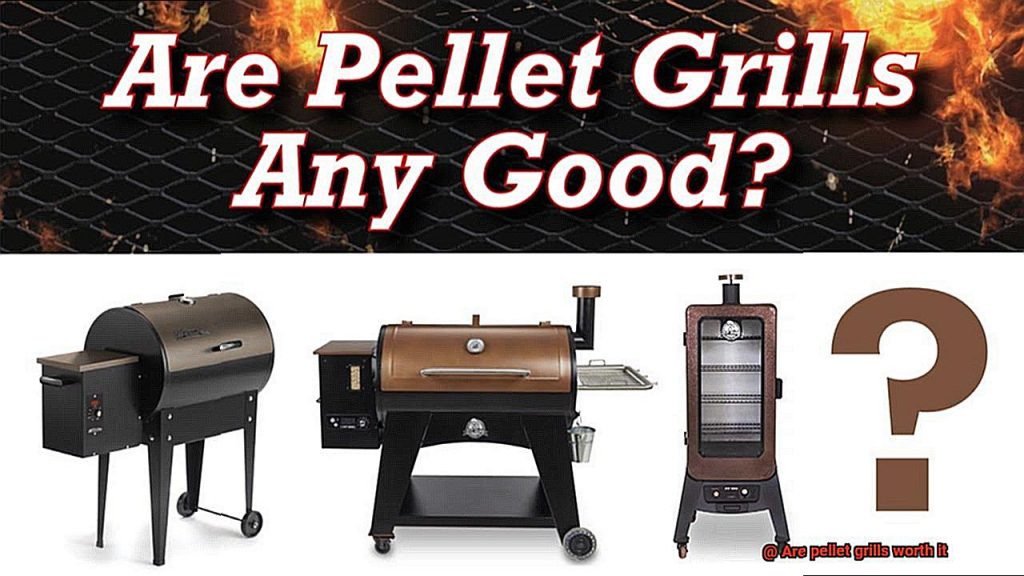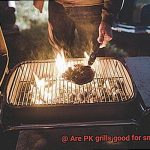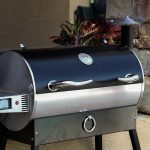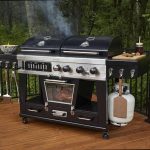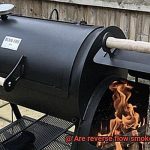Are you tired of the same old grilling routine? Do you want to take your outdoor cooking game to the next level? If so, you may have heard about pellet grills. They’re the latest craze in the grilling world, promising consistent heat and a unique flavor profile. But are they worth it?
Pellet grills are a combination of a smoker and a grill, using wood pellets to generate heat and smoke. They offer convenience like never before, but with so many options flooding the market and a significant investment required, it can be tough to decide if they’re worth the cost.
In this post, we’ll dive deeper into the world of pellet grills. We’ll explore their benefits, including versatility and ease of use. And we’ll discuss potential drawbacks, such as maintenance and initial cost.
If you’re considering investing in a pellet grill or just curious about this new trend, stay tuned for our expert opinion on whether or not they’re worth it. We’ll help you make an informed decision about whether or not to add one to your outdoor cooking arsenal.
Contents
What Are Pellet Grills?
Pellet grills use wood pellets as their fuel source, making them not only convenient but also versatile.
Pellet grills work by feeding the pellets into a firebox, where they are ignited and burned to create heat and smoke. The heat is then circulated around the cooking area by a fan, ensuring that your food is cooked evenly. Gone are the days of constantly checking on the fire – simply set the desired temperature and let the grill do the rest.
Pellet grills offer a wide range of benefits beyond their convenience. One of the best things about them is their versatility. They can be used for everything from low and slow smoking to high-heat searing, making them suitable for virtually any dish and cooking style. Additionally, many models come with built-in features such as WiFi connectivity and temperature probes, allowing for even greater precision and control over the cooking process.
Not only are pellet grills versatile, they also come in a range of sizes and styles to suit every outdoor cook’s needs. Plus, they offer an even heated cooking surface, creating perfectly cooked meals every time.
While pellet grills may be more expensive than traditional charcoal or gas grills, their convenience and versatility make them a worthwhile investment for many home cooks. With easy operation and precise temperature control, outdoor cooking has never been easier or more enjoyable.
Pros of Pellet Grills
As an expert on the pros of pellet grills, I can tell you that these innovative grills are a game-changer for outdoor cooking.
First and foremost, pellet grills are incredibly versatile. Whether you’re in the mood for smoking, grilling, roasting, or baking, a pellet grill can handle it all. This makes them an ideal choice for those who like to experiment with different cooking techniques.
But versatility isn’t the only advantage of pellet grills. They are also incredibly easy to use. With digital controls that allow you to set the temperature and cooking time, achieving consistent and accurate results is a breeze. And since they use wood pellets as fuel, there’s no need to fuss around with charcoal or propane tanks.
Speaking of convenience, pellet grills offer a more convenient cooking experience overall. Loading the pellets into the hopper is easy, and the grill will automatically feed them into the firepot as needed. This means less time tending to the grill and more time savoring your delicious food.
And let’s not forget about flavor – perhaps the most important factor in outdoor cooking. Pellet grills produce excellent flavor thanks to the wood pellets used as fuel. The smoky flavor they impart is hard to replicate with other types of grills. Plus, since the temperature is so consistent, you can cook your food to perfection every time.
But what sets pellet grills apart from traditional grills? Pellet grills have a unique feature called indirect cooking, which allows you to cook your food evenly without worrying about flare-ups or hot spots. This makes them an ideal choice for slow-cooking meats like brisket or ribs.
Cons of Pellet Grills
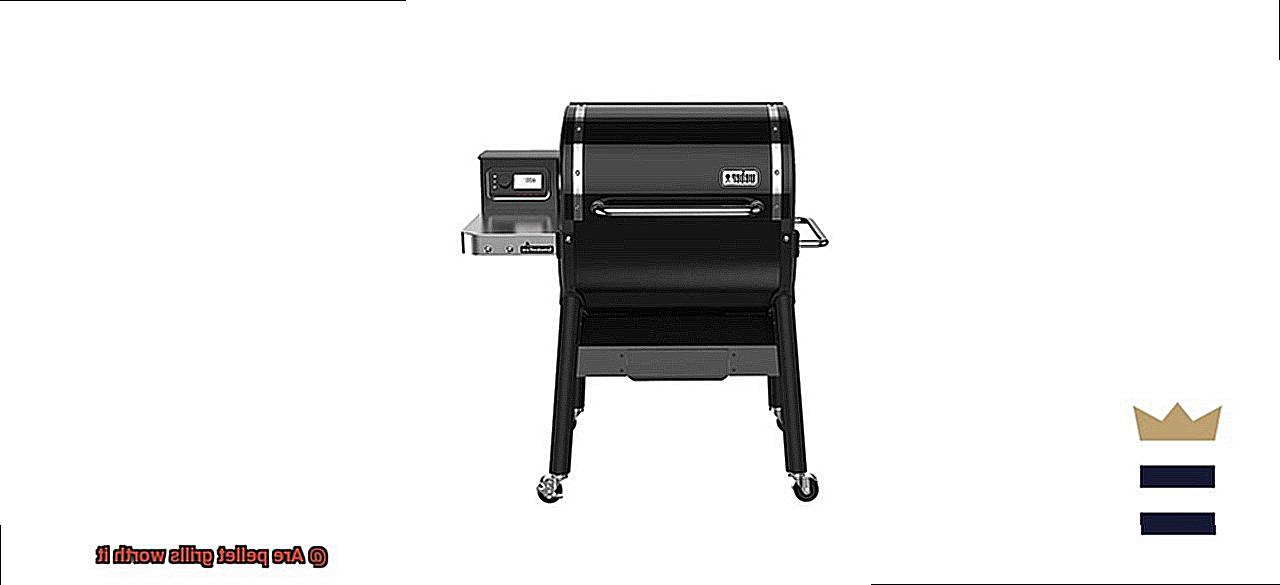
While pellet grills offer convenience and ease of use, they also have their drawbacks that you should consider before making a purchase.
One of the biggest cons of pellet grills is their cost. Compared to traditional charcoal or gas grills, pellet grills come with a higher price tag. This is due in part to the technology used to operate the grill and the cost of the pellets themselves. While some might argue that the cost is worth it for the convenience and quality of food produced on a pellet grill, others may feel that the price is too steep.
Another downside to pellet grills is their reliance on electricity. Unlike other types of grills, which can be used anywhere, pellet grills require an electrical outlet to operate. This can be a problem for those who want to use their grill in remote locations or during power outages.
Pellet grills also have limited temperature range compared to other types of grills. While they can typically reach temperatures between 180-500 degrees Fahrenheit, they may struggle to reach higher temperatures required for certain types of cooking, such as searing or blackening.
Maintenance and upkeep can also be a downside of pellet grills. The pellets must be stored properly to prevent moisture from affecting their quality, and the grill itself requires regular cleaning to prevent buildup and maintain optimal performance. Additionally, replacing parts such as the igniter or auger can be expensive.
Lastly, some users may find that pellet grills lack the authentic smoky flavor associated with traditional charcoal or wood-fired cooking. While many pellet grills offer smoke settings and flavored pellets, some may argue that it still doesn’t compare to the real thing.
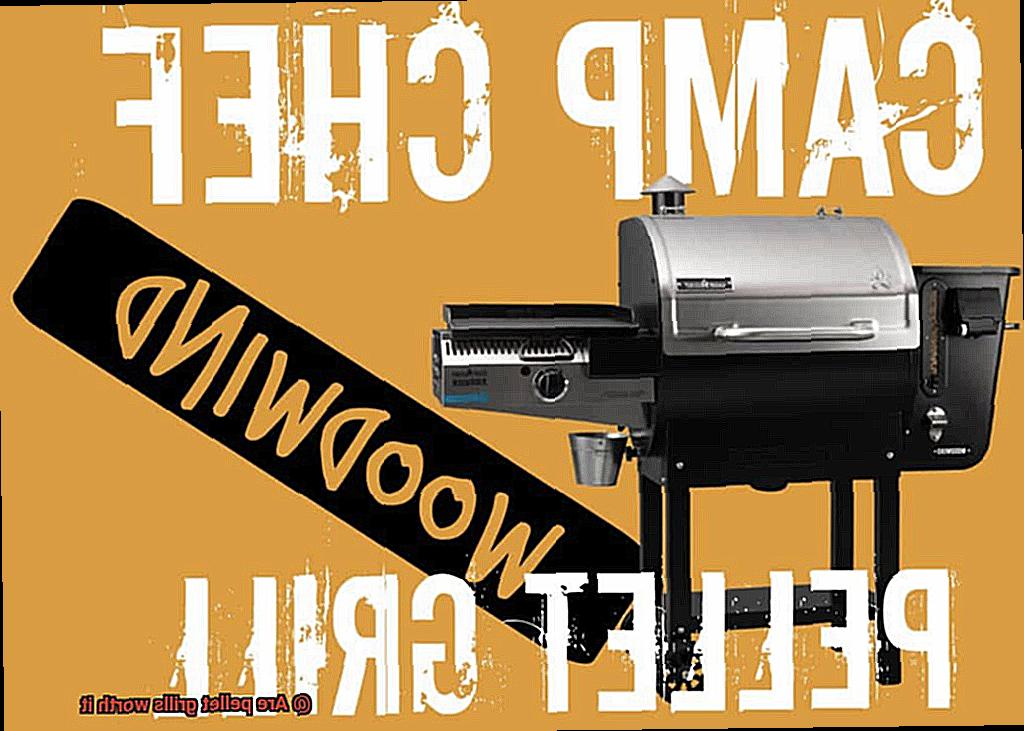
Cost Comparison: Pellet Grills vs Traditional Grills
As you weigh your options between a pellet grill and a traditional grill, one of the most important factors to consider is cost. While it’s true that pellet grills come with a higher price tag than traditional grills, they also offer a range of benefits that make them worth the investment in the long run.
Here are some key points to keep in mind when comparing the cost of pellet grills and traditional grills:
- Fuel Efficiency: Pellet grills are known for their exceptional fuel efficiency. They burn cleanly and efficiently, producing less ash and using less fuel overall. This means that you’ll save money on fuel costs over time, making the initial investment in a pellet grill more worthwhile.
- Versatility: Pellet grills are incredibly versatile, allowing you to smoke, grill, roast, and even bake with ease. Traditional grills, on the other hand, are typically limited to grilling and require additional equipment for smoking or roasting. With a pellet grill, you’ll have all these options in one appliance, which can save you money on additional equipment.
- Advanced Features: Pellet grills often come with advanced features such as digital controllers and Wi-Fi connectivity that make them easier to use and monitor than traditional grills. These features can help you achieve more precise cooking temperatures and times, resulting in better-tasting food and less waste.
In summary, while the initial cost of a pellet grill may be higher than a traditional grill, the fuel efficiency, versatility, and advanced features make it worth the investment over time. By choosing a pellet grill, you’ll save money on fuel costs, equipment purchases, and even food waste.
Temperature Comparison: Pellet Grills vs Traditional Grills
Grilling is more than a pastime; it’s an art that requires precision and consistency to achieve perfection. While traditional grills have been around for decades, pellet grills are quickly gaining popularity for their advanced temperature control and versatility. But what exactly sets them apart, particularly in terms of temperature comparison?
Pellet grills utilize an automated system to regulate temperature, making them the ultimate “set-it-and-forget-it” grilling tool. An electric-powered auger feeds wood pellets into a fire pot, which then ignites and creates heat. The temperature is controlled by a thermostat that adjusts the speed of the auger and the amount of pellets being fed into the fire pot. This means that you can achieve a consistent temperature throughout the cooking process without having to constantly monitor or adjust the grill.
In contrast, traditional grills rely on charcoal or gas burners to create heat. While these methods can produce high temperatures, they are not as consistent as pellet grills. Charcoal grills require constant monitoring and adjustment to maintain a consistent temperature, while gas grills can have hot spots and uneven heat distribution.
Moreover, pellet grills offer more versatility in terms of temperature control. Most models allow you to set specific temperatures, which means you can switch between smoking, roasting, and grilling without having to adjust the grill’s settings manually. This makes them ideal for cooking a variety of dishes, from slow-cooked brisket to seared steaks.
But that’s not all. Here are some additional ways pellet grills outshine traditional grills when it comes to temperature comparison:
- Pellet grills can reach higher temperatures than most traditional grills.
- They offer precise temperature control within a few degrees.
- Pellet grills have a wider temperature range, allowing for both low-and-slow cooking and high-heat searing.
- They produce less smoke than traditional smokers.
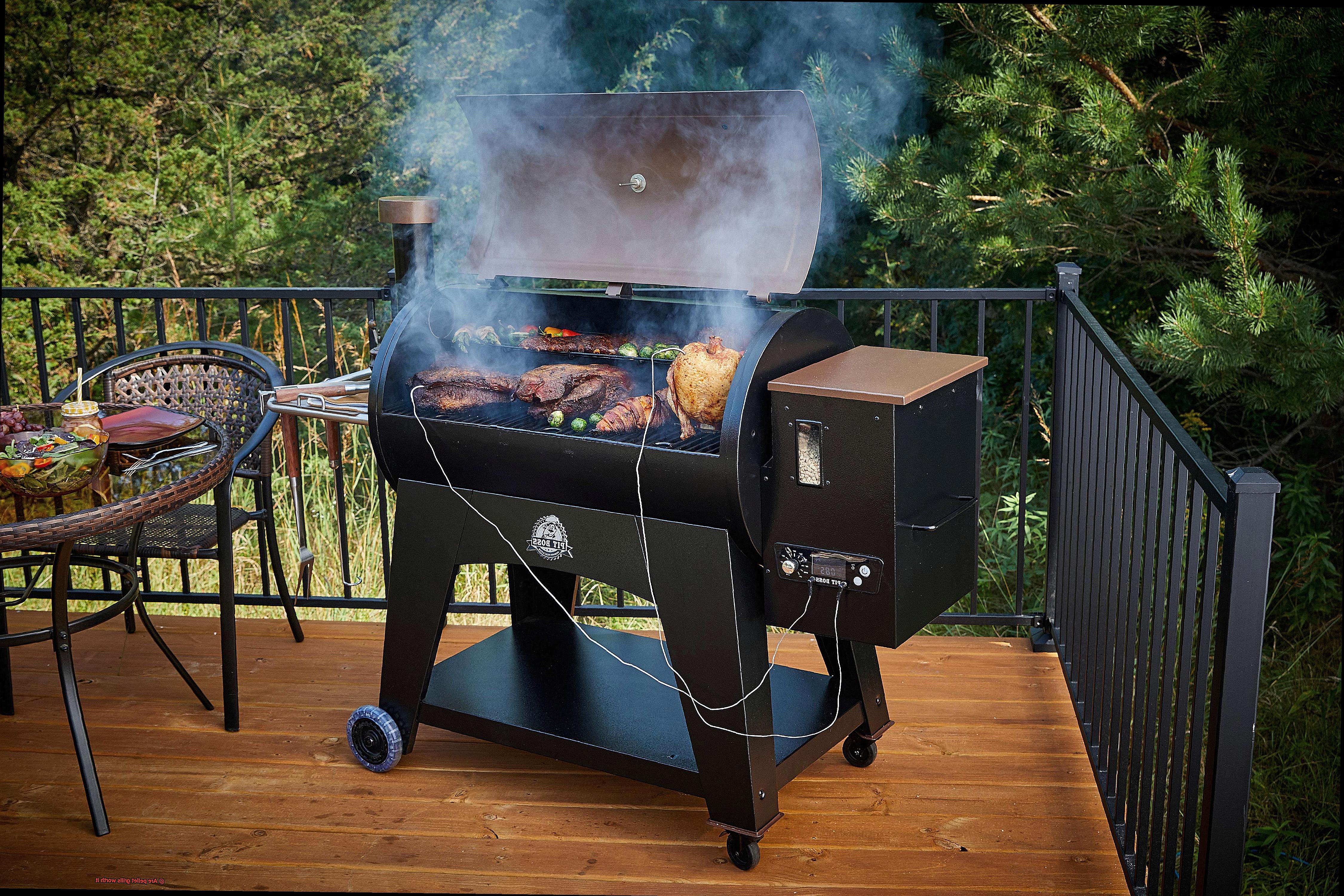
Additional Considerations for Purchasing a Pellet Grill
Before you make your purchase, there are several additional factors to keep in mind beyond just the cost.
First and foremost, consider the amount of cooking space you need. Are you the grill master of your family or are you planning on hosting large gatherings? Pellet grills come in a variety of sizes, so choose one that can accommodate your needs.
Another crucial factor is temperature control. Pellet grills offer more precise temperature control than traditional charcoal or gas grills. This can be a significant advantage when cooking delicate foods like fish or vegetables. With the right temperature control, your meals will be cooked to perfection every time.
It’s also essential to consider the quality and type of pellets used in the grill. Cheaper pellets can cause clogs and inconsistent temperatures, while higher quality pellets will provide a more consistent heat source. So don’t skimp on the pellets – it’s worth investing in high-quality ones for better results.
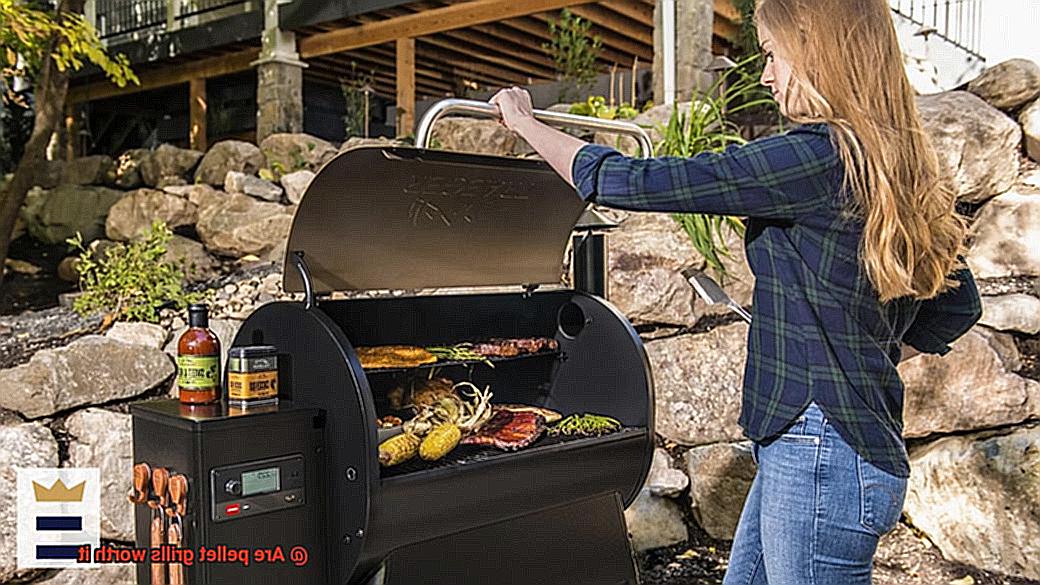
Finally, don’t forget about maintenance and cleaning. While pellet grills are known for their convenience and ease of use, they do require regular cleaning and upkeep to ensure optimal performance and longevity. Be sure to follow the manufacturer’s instructions for cleaning and storage to keep your pellet grill in top condition.
Types of Wood Pellets to Use in a Pellet Grill
They allow for precise temperature control and are incredibly versatile. But did you know that the type of wood pellets you use in your pellet grill can greatly impact the flavor of your food? Here are some of the different types of wood pellets available and how they can affect your cooking.
Hickory
Known for its strong and bold flavor, hickory pellets are a great choice for cooking beef or pork. They provide a smoky taste that is sure to satisfy any BBQ lover’s palate.
Mesquite
Mesquite pellets have a more intense smoke flavor, making them a great choice for chicken or fish. They add a distinct southwestern taste to your dishes that is sure to impress.
Apple
For those who prefer a sweeter taste, apple pellets are a great option. They provide a subtle sweetness that pairs well with poultry or pork, making them perfect for those who want a milder flavor.
Cherry
Cherry pellets add a fruity and slightly tart flavor to your dishes, making them perfect for smoking salmon or adding some sweetness to pork and chicken dishes.
Oak
Oak pellets provide a neutral and mild smoke flavor that works well with any type of meat or vegetable. They are often used as a base for blending with other types of wood pellets to create unique flavor combinations.
It’s important to note that some wood pellets may contain fillers or additives that can affect the overall taste and quality of your food. When choosing wood pellets for your pellet grill, it’s recommended to look for high-quality options made from 100% pure hardwood without any added fillers or chemicals.
Tips for Using a Pellet Grill
If you’re a fan of grilling, investing in a pellet grill can be a game-changer for your outdoor cooking experience. However, to get the most out of your investment, there are several tips and techniques you should keep in mind.
Read the instructions
While it may seem obvious, it’s crucial to read the manufacturer’s instructions before using your new pellet grill. This will ensure that you understand how to properly operate the grill, what temperature settings to use, and how to clean it. Skipping this step can lead to frustration and even damage to your grill.
Use high-quality pellets
The type of pellets you use can make a significant difference in the flavor of your food. Look for pellets made from 100% hardwood, such as hickory or mesquite, for an authentic smoky taste. Investing in high-quality pellets may cost a bit more, but the results are well worth it.
Keep it clean
Cleaning your pellet grill after each use is essential for both performance and flavor. Remove any leftover debris and ash from the firepot and clean the grates with a grill brush to ensure that your food is cooked evenly and tastes great.
Preheat thoroughly
One of the most important tips for using a pellet grill is to preheat it thoroughly before adding your food. This will help prevent sticking and ensure that the grill reaches the desired temperature. Depending on your model, preheating may take anywhere from 10-30 minutes.
Avoid opening the lid too often
Opening the lid too frequently can cause fluctuations in temperature and increase your cook time. Try to keep the lid closed as much as possible while still monitoring your food’s progress.
Experiment with wood chips and rubs
Adding wood chips or chunks to your pellet grill can enhance the smoky flavor of your food. Experimenting with different types of rubs can also add even more depth of flavor. Don’t be afraid to try new flavor combinations and find what works best for you.
wyU9aXKmtLY” >
Conclusion
In conclusion, for those who take their outdoor cooking seriously and demand convenience, versatility, and precision in their grilling experience, pellet grills are a must-have investment. Unlike traditional grills, pellet grills use wood pellets to generate heat and smoke, creating a unique flavor profile that is simply unmatched. With easy operation, precise temperature control, and even heating surface, pellet grills offer a wide range of benefits that can take your cooking game to the next level.
While they may come with a higher price tag than traditional charcoal or gas grills, their fuel efficiency, advanced features, and overall convenience make them worth every penny in the long run. However, it’s important to consider potential drawbacks such as maintenance and upkeep costs as well as the limited temperature range compared to other types of grills. Additionally, pellet grills rely on electricity which could be an issue during power outages.
When purchasing a pellet grill, it’s crucial to consider factors such as cooking space needed, quality of pellets used in the grill and maintenance requirements. Despite these considerations though if you’re looking for an easy-to-use grill that delivers delicious meals every time then investing in a pellet grill is definitely worth it.

